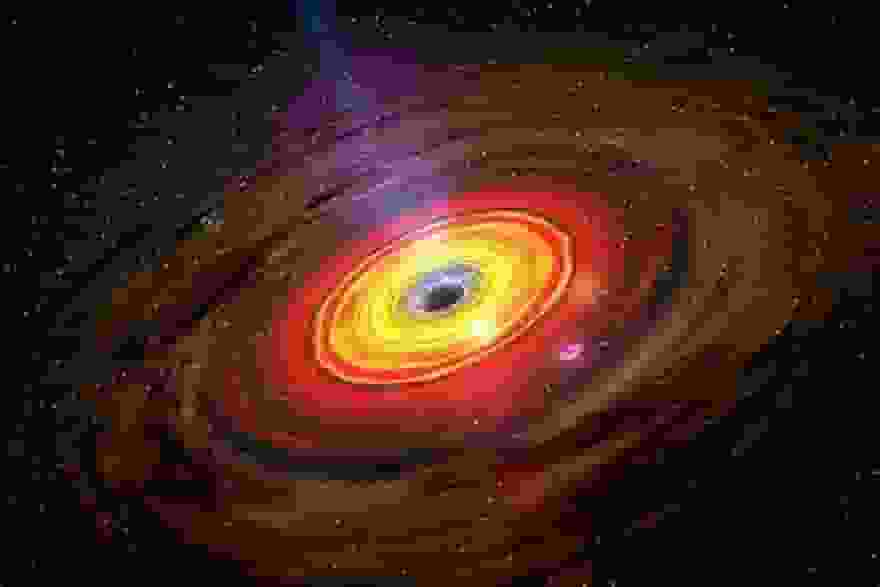
(Photo: Pikist)
In an amazing scientific effort to figure out the mysterious process of star formation, a group of experts has come up with a new way to record the fascinating stories of stars as they grow. This new and important method has given us a lot of useful information about the amazing journeys these celestial bodies take, from how they form in falling cosmic clouds to the crucial moment they start their own journeys through the vast universe.
A team of researchers from the University of Vienna, under the direction of renowned astronomer Nria Miret-Roig, have discovered a novel method for estimating the age of celestial objects. The team has come up with a new way to study the world that promises to change the way we think about things forever. It does this by cleverly mixing isochronous measurement and dynamical tracking. Scientists have made an interesting discovery: two different kinds of telescopes are very important for figuring out what the world is all about. The first one is known for being very accurate and is made to find the exact moment when stars are born. The latter, on the other hand, tells us a lot about how stars move away from their original groups. These results help us learn more about the happenings in space that shape the huge void of space.
The group of experts used an experimental method to look into how young star clusters that are as far away as 490 million light years from Earth behave. The team’s careful research led them to an amazing discovery: stars tend to stay close to their brothers for an amazing 5.5 million years after they are born. This discovery sheds new light on how these faraway celestial groups work and connect with each other. In a big step forward, scientists have synchronized cosmic clocks, which gives them a key tool for solving the question of how stars form in the early stages of their lives. This discovery could change how we think about things that happen in space.
Núria Miret-Roig recently said that their study was important because it shed light on the complicated process of how stars are formed. Their work on how stars and star groups change over time has made it possible for more research to be done in this area. Miret-Roig stressed that their research has not only helped us understand how our own galaxy, the Milky Way, formed, but it also has implications for how other galaxies form.
In a new study, scientists have questioned the current age estimates for stars found in groups. This gives us a better understanding of how stars change over time. The results of this study could change what we think we know about these heavenly things. Scientists have found a clear difference between two types of clocks that are used to keep track of events in space. The isochronous measurement clock is the first clock that starts to tick as soon as a star is born. The second clock, called the dynamical backtracking clock, doesn’t start to tick until stars are able to break away from their birth clouds and groups. This interesting discovery throws new light on how complicated the growth of stars is.
An important study by João Alves, a professor at the prestigious University of Vienna, sheds light on what age differences mean in two different ways. As one of the authors of this study, Alves stresses how important this age difference is for correctly figuring out how a star is growing. The study showed how important the Gaia project from the European Space Agency and readings from the APOGEE catalog on the ground were. These data sources were used in the study, which shed new light on the subject.
The study that came out in the prestigious magazine Nature Astronomy on November 23 has not only helped us learn more about how stars form, but it has also opened up interesting new ways to study the evolution of stars, the formation of planets, and the formation of galaxies in general. The study, which was done by a group of well-known scientists, has shed new light on the complicated steps that are needed for stars to form. By looking into the complicated process of star formation, this study has not only added to what we know, but it has also opened the door for more research into how stars change over time, how planets form, and how galaxies form in general. Many scientists are very interested in the results because they give us a new way to think about how stars form. Our knowledge of the world and its celestial things could change a lot because of this discovery. Now that scientists understand this better, they are ready to start a journey of discovery as they look into the mysteries of how stars evolve. By figuring out the complicated processes that make stars what they are, scientists hope to learn more about how planets form and how galaxies form in general. There are many things that this study could lead to more research into, so its effects are very broad. Scientists now have a lot of information that can be used to solve the puzzles of the universe. This gives us chances to learn more about the universe and the things that happen in it that have never been possible before. Scientists are very excited about what’s to come in this field, so the importance of this work cannot be stressed enough. The study not only helps us understand how stars are made, but it also has the ability to




![Tyson Foods Plant [Photo: Food Manufacturing]](https://southarkansassun.com/wp-content/uploads/2023/08/iStock_1185520857__1_.5e441daa51cca-600x337.jpg)







![Silverado Senior Living Management Inc. [Photo: Los Angeles Times]](https://southarkansassun.com/wp-content/uploads/2023/10/download-6-4-600x337.jpg)

![China's Wuhan Institute of Virology [Photo: Nature]](https://southarkansassun.com/wp-content/uploads/2023/09/d41586-021-01529-3_19239608-600x337.jpg)
















